This post is part of our 3-part Hero Conf London 2018 series, where we’re sharing session insights exclusive to attendees only – until now! Check out part 1 and stay tuned for part 3 to come!
What are you currently doing to outperform your competitors? Do you even know what their PPC campaigns look like?
Competitive research is a core pillar of any PPC campaign. The question is, how can we do it effectively? What tools and strategies can we deploy to get a full understanding of our competition?
In her Hero Conf workshop, Marcela De Vivo, Digital Marketing Analyst at SEMrush, makes the case for using AI to capture insights from your competitor’s PPC campaigns. Here, you’ll learn methods of collecting competitive data, how to analyze their ads and some practical tips on creating better campaigns.
Making a Case for AI-Driven Competitive Research
As illustrated by Marcela, the world of paid search used to be simple:
- People would use search engines to answer questions and look for specific information using keywords.
- Google would then serve relevant ads based on these keywords.
- If the ad attracted the searcher, they would click through to a landing page that would persuade them to take the next step in the journey.
- If all goes according to plan, the landing page would convert the searcher into a lead, subscriber or customer.
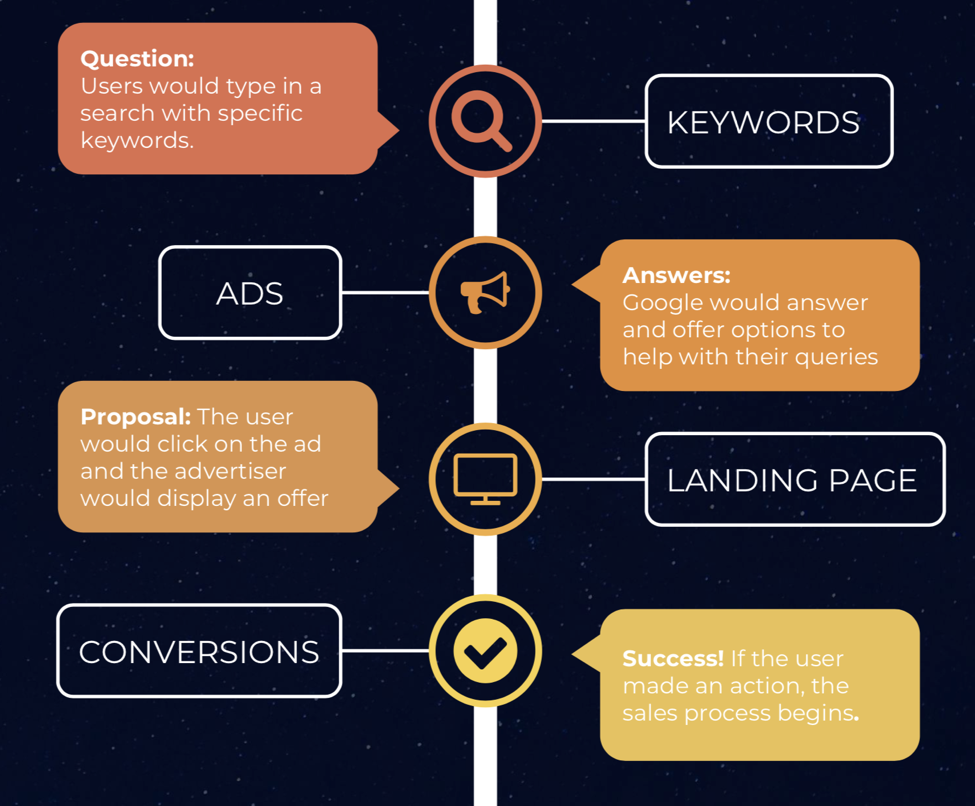
Over the past 16 years, this process has evolved dramatically. The journey is no longer as linear as the illustration above. According to the timeline created by Marcela, it looks something like this:
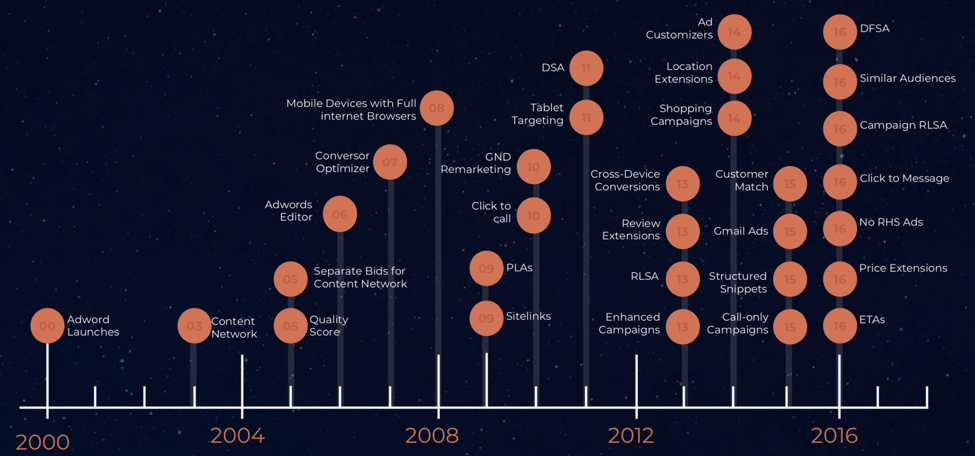
The concern for many marketers is that AI will begin to eat away at their jobs. Dozens (if not hundreds) of AI-driven tools are being created every year, tackling tasks from content writing to banner design:

While this may seem scary, this provides more opportunity than loss. The goal of creating AI is to free us up for more critical, strategic work. Specifically, we can automate repetitive marketing tasks and put our efforts into these three core areas:
- Creativity: Focus on awe-inspiring, moving and story-driven messaging. This applies to content creation and branding, not just advertising.
- Innovation: Come up with new ideas and approaches nobody has dared to try.
- Data Analysis: There’s only so much a machine can do. There’s one human trait they’re missing, which you’ll soon learn.
AI is meant to empower us, automating and scaling repetitive tasks while allowing us to expand on the three areas above. This includes competitive research, which is exactly what this workshop was all about.
Know Your Competition Part 1: Analyzing The Battleground
Competitive research involves understanding how they serve their customers and using that insight to find gaps you can fill. Let’s start with the analysis side of the coin.
If you’re not already analyzing your competition, you’re leaving yourself vulnerable. Why? Because they already know you.
Start by benchmarking your website against your competitors. In SEMrush, you can do this across all of your digital marketing channels:
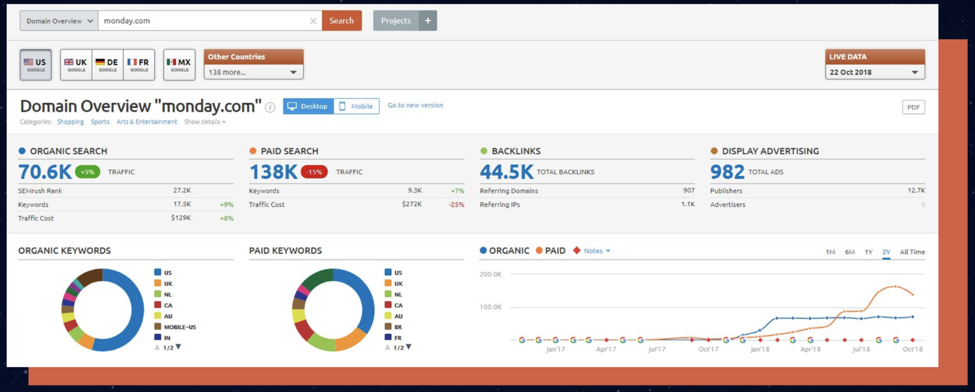
From here, you can dig deeper into paid search, analyzing metrics such as average position of a campaign, CPC of a keyword and the percentage of search traffic that ad is generating:
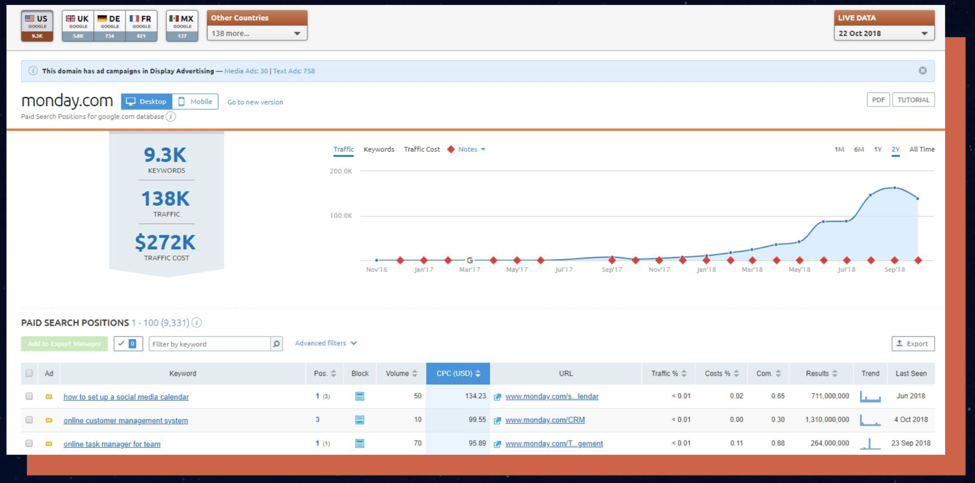
Dig deeper into your competitor’s results by checking out the auction insights for each of their target keywords. A useful metric is the impression share, which shows you the percentage of impressions a competitor is generating on the SERPs for a specific keyword:
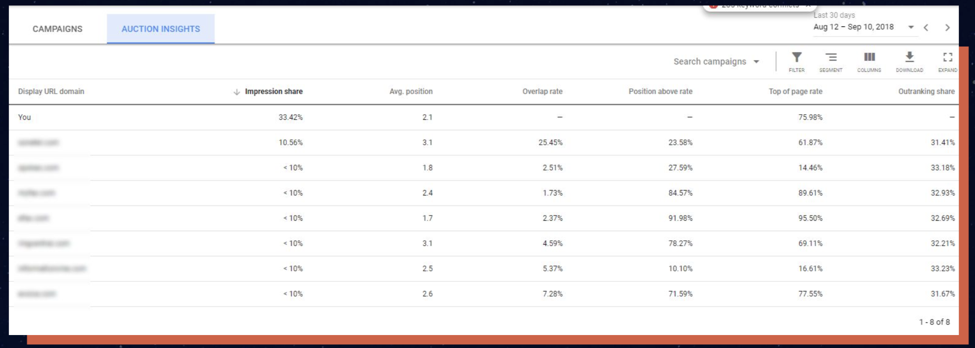
Now it’s time to go one level deeper into your analysis. The end goal is to uncover keyword gaps to find opportunities your competitors aren’t taking advantage of. This is done in two ways:
- Look at who is bidding on your target keywords
- Look at which keywords your competitors are bidding on
This gives you a better understanding of the PPC battleground you’re playing on. SEMrush also has a method of finding these keyword gaps using a domain vs. domain comparison:
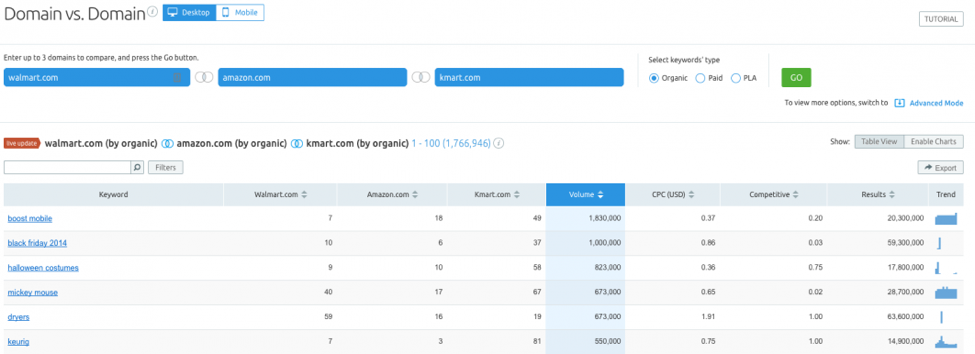
Select the “Paid” keyword type to compare PPC keywords across each domain. You can then select an intersection type to find unique keywords to each domain.
Know Your Competition Part 2: Dissecting Ad Creative & Landing Pages
Analyzing this data is key to fully understanding your competition. The next step is to look deep at their ad creative, landing pages and customer journey as a whole. This will help you see where they “zig” so you can “zag.”
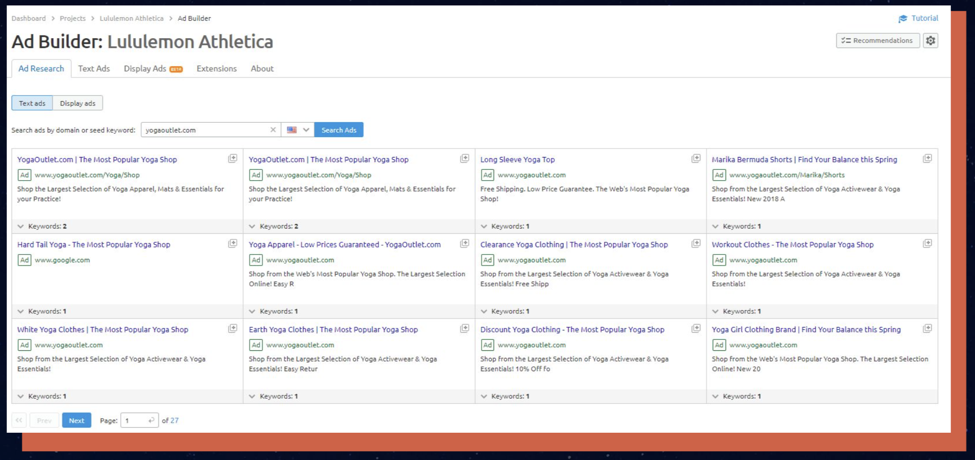
Start by looking at how they communicate with their audience in their ad copy. This is a practice that AI simply cannot do (yet). Here, it’s your job to look for patterns in ad copy, creative and intent. Not only are you looking for similarities in the words they use, but patterns in the structure for each ad.
Dig deep into your competitor’s top performing ads. Here, you can analyze performance across both the search and display networks:
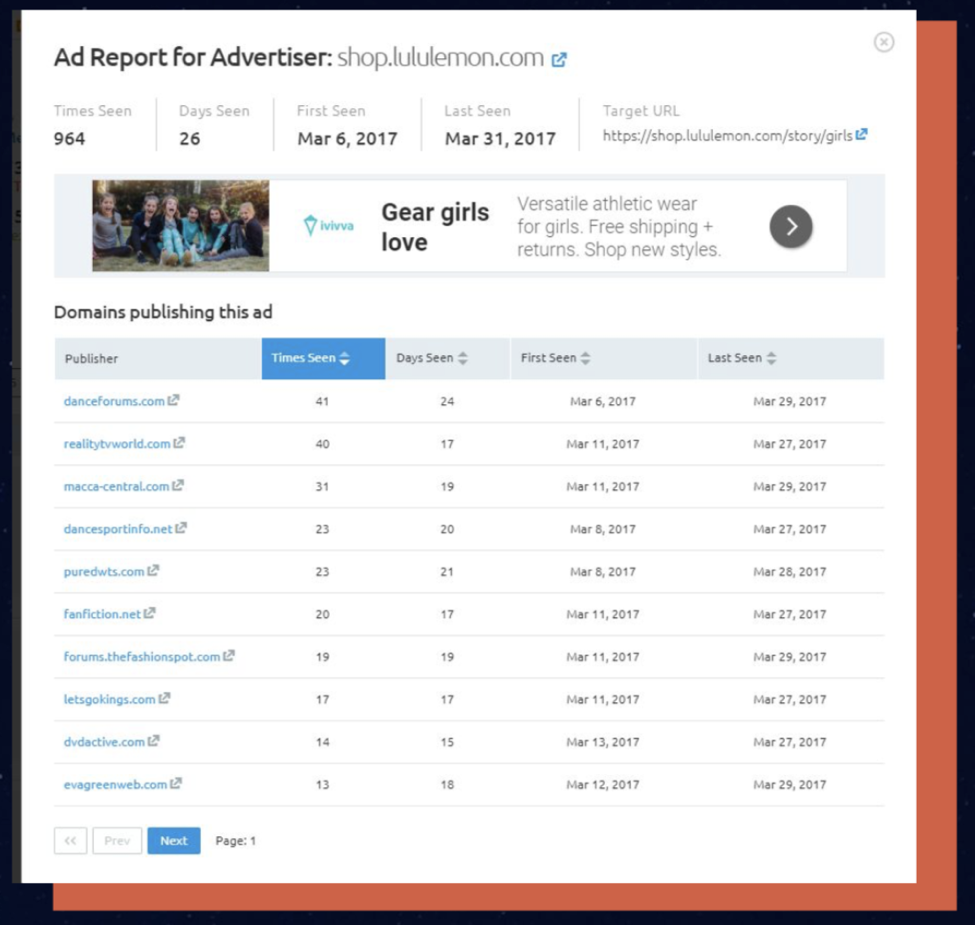
When looking at your competitor’s top performers, look out for the following:
Common framework: Do all ads follow a specific formula? For example, the following ads all begin with the target keyword, followed by similar ad copy:
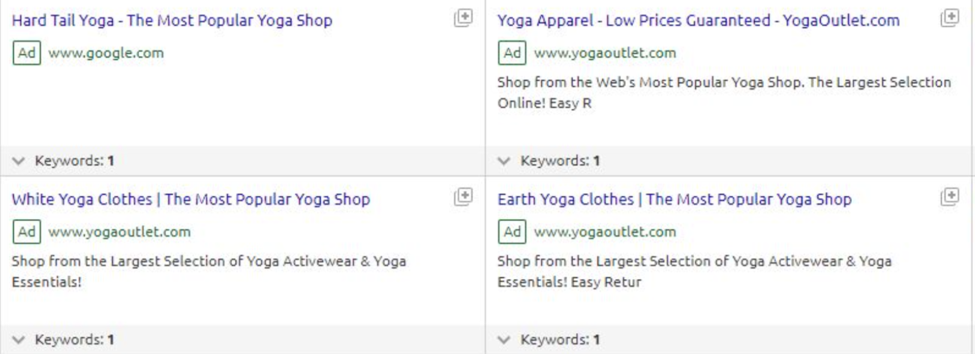
- Ad extensions: Are they using specific ad extensions? Which do they use more than others? Which do they not use at all?
- Copywriting: Do they utilize proven copywriting practices, such as urgency and social proof?
- Calls-to-action: How do they compel searchers to take action? Are calls-to-action specific or vague?
Keep a note of these things to find new approaches to experiment with. Look for opportunities where you can undercut your competition on the SERPs. Do the same with their landing pages. In SEMrush, you can look at the metadata of each landing page, along with the number of times it was seen (across all keywords).
Then, look at the granular data behind each of your competitor’s top performing landing pages. Check out which keywords are leading to those landing pages, as well as the number of times it appears for those keywords in the SERPs:
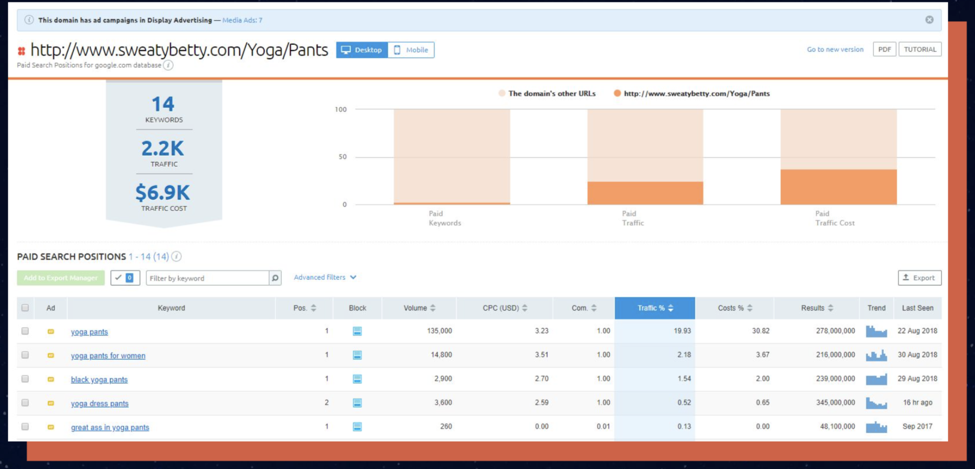
As well as the data, browse the landing page on both desktop and mobile. Analyze their copywriting and creative against proven conversion rate optimization principles. For example, are they directing traffic to specific product pages or category listings?
In the example below, Offspring sends traffic for the keyword “nike air max 270” to a category page. This page lists several varieties of the shoe featured in the keyword:
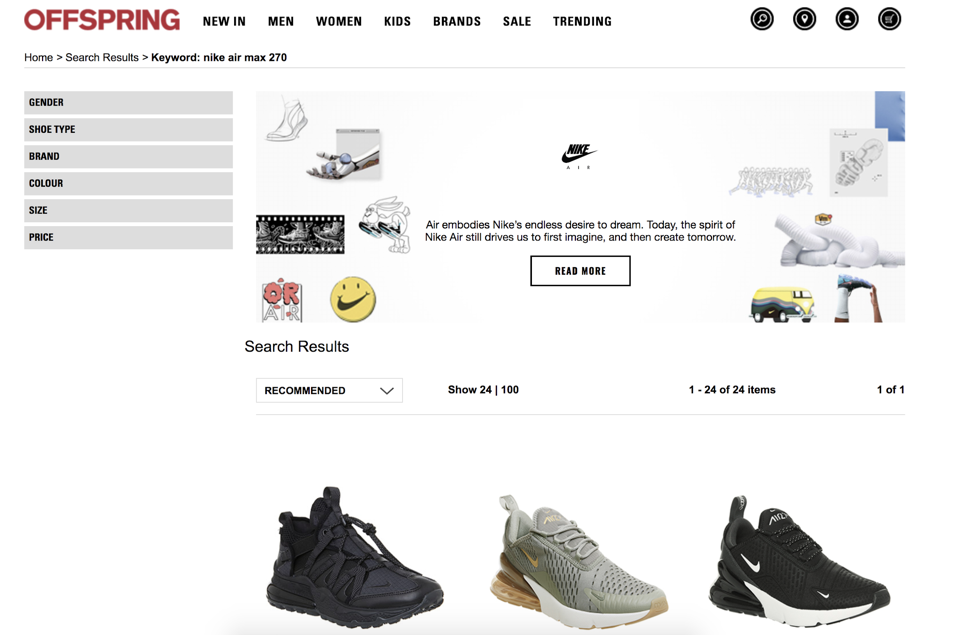
While this is good practice for ecommerce brands, there’s one glaring problem: the important information is buried below the fold. Perhaps removing the extra information at the top of the page will reduce friction, and thus increase conversions. If Offspring were your competitor, this is an approach you could test against them.
Gain the High Ground: How to Create Better PPC Ads
With all this data at hand, you now have enough insight to act on. Your mission: to create high-performing ads that crush your competitors!
Marcela suggests using the following insights to further fuel this mission:
- Watch the trends: Look at how specific keywords increase and decrease in popularity across specific geos. Jump on emerging, relevant trends as they begin to rise.
- Use the TrustPilot schema: For one brand, including TrustPilot reviews increased clicks by 25% and conversions by 15%. Look out for extensions that your competitors aren’t using.
- Track funding cycles: Marcela shares how monitoring for rapid increases in paid traffic can indicate new rounds of funding:
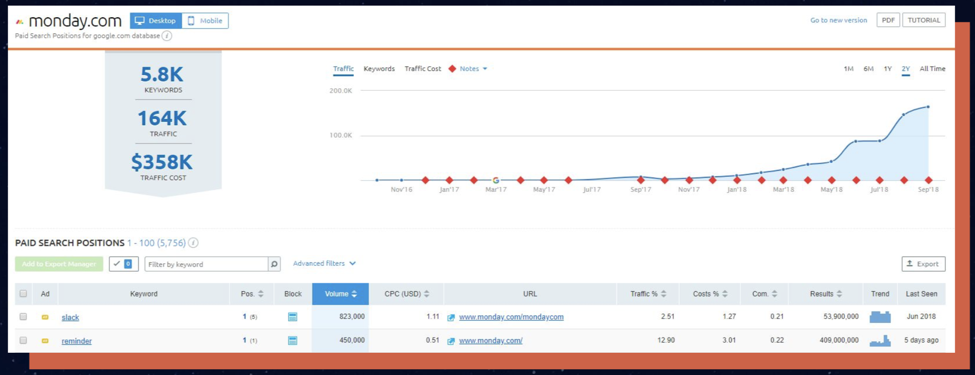
- Learn from their mistakes: Keep an eye out for irrelevant keywords, especially those with a high CPC. Add these to your own negative keyword lists ASAP:
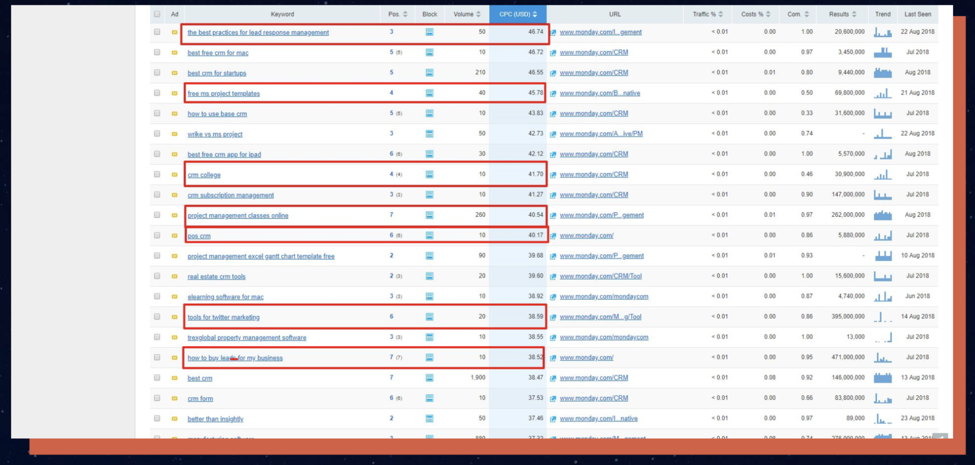
Here are a few other practical methods we use to create great ads at Acquisio:
1. Protection Against Competitor Clicks
If you’re researching your competition, you can bet they’re doing the same to you. The biggest problem here is that, every time your competitor clicks one of your ads, you’ll be paying for it.
You can protect yourself against competitor clicks by using IP exclusion. First, you need to find their IP address. One way of doing this is to subscribe to their emails and, once you receive one, checking out the original source in Gmail:
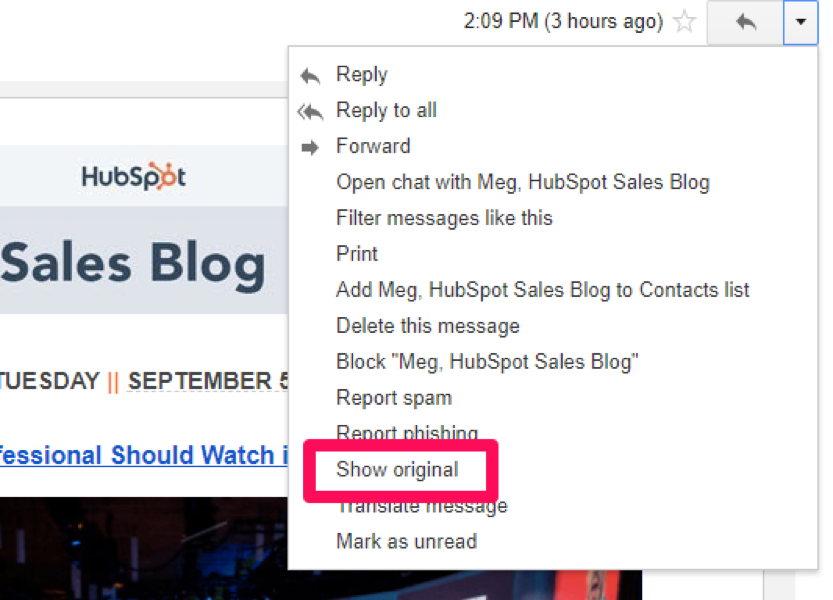
Then, search for the term “received: from” to find their IP address. This should look something like this:
![]()
You can also use the following IP checker to find IP addresses by domain:
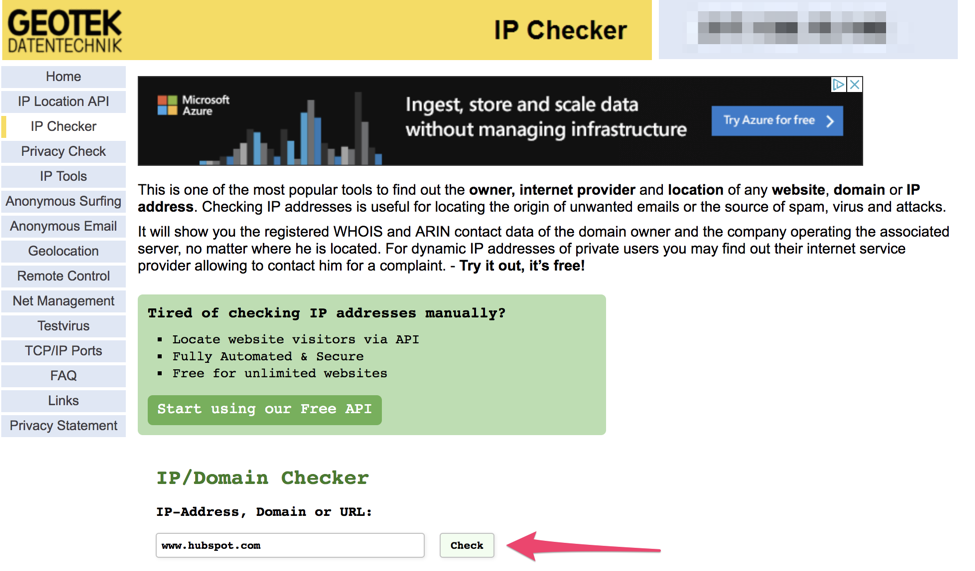
To exclude IP addresses, head to your campaign settings. Under the IP Exclusions section, click “Edit” and enter each of your competitor’s IP addresses:
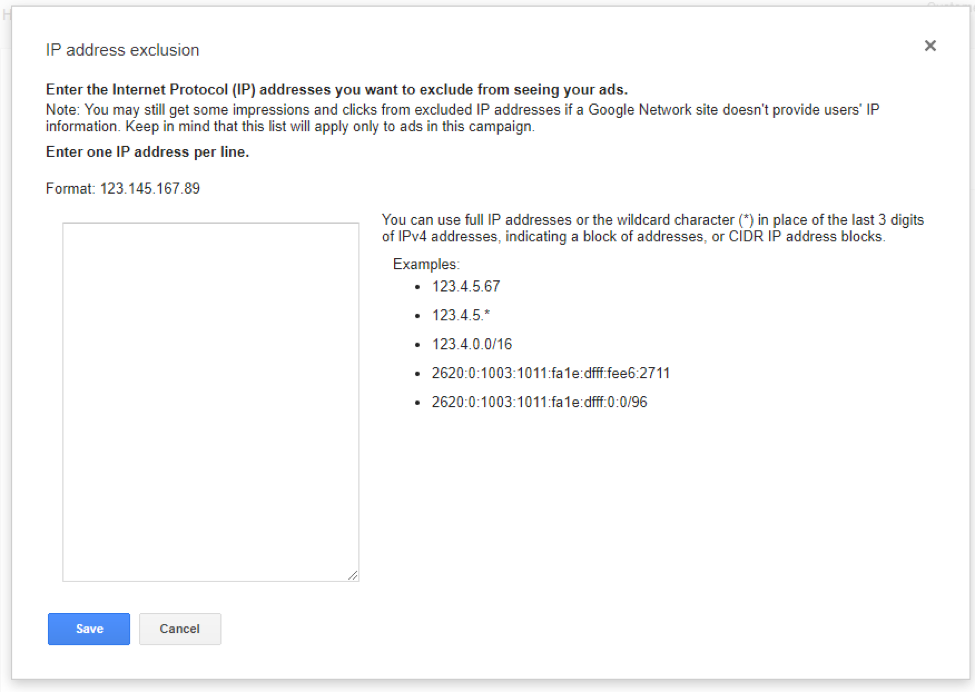
2. Test Dynamic Ads
When dealing with several products, services or features, customizing every single ad can be time-consuming. The same goes for offers. Tailoring your ad copy for the number of days left on a sale, or copy for dozens of products, can take hours out of your day.
Automate this process using dynamic ad text. For example, you can use dynamic text to automatically populate the number of days left in a sales for a specific product (or group of products):

Not only will you increase efficiency, but also your Quality Score. For example, you can use dynamic text to insert the exact search query a user entered to capture attention and make your ad copy hyper-relevant to your target keywords.
For more information, check out Google’s documentation on the feature.
3. Improve Targeting with In-Market Audiences
With Google collecting a huge amount of data on their users, it’s only fair that we PPC marketers get to use some of it. Which is where in-market audiences come in.
In-market audiences allow advertisers to target users based on their interests or behaviors across the web. It also provides a better understanding of search intent. For example, a user searching for “best coffee beans” will be in research mode. While the keyword “buy coffee beans” indicates a higher commercial intent.
To use in-market audiences, create a new ad group and, when selecting how you’ll be targeting users, select “Interests & remarketing:”

Then, select “In-market audiences” from the “Select category” dropdown:
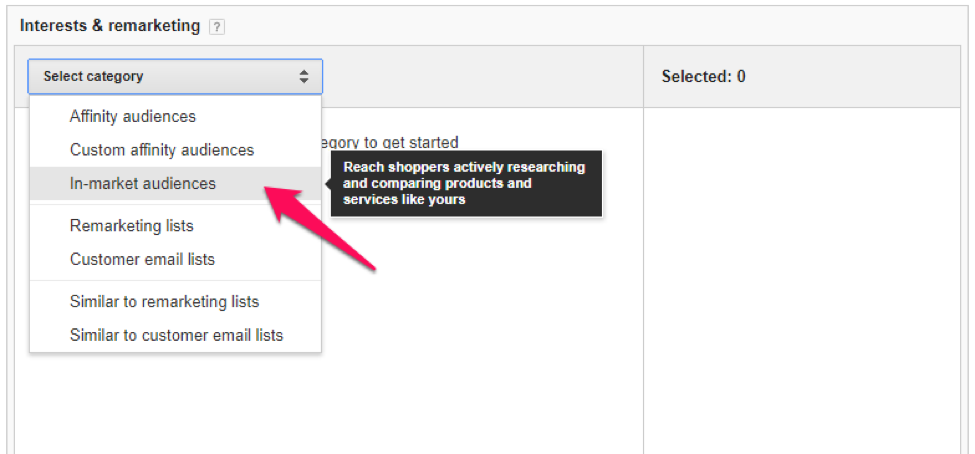
You’ll then be able to choose several broad and granular interests and behaviors. For example, you can target an audience as broad as “Motor Vehicles” or go as deep as specific brands, such as “Tesla Motors:”
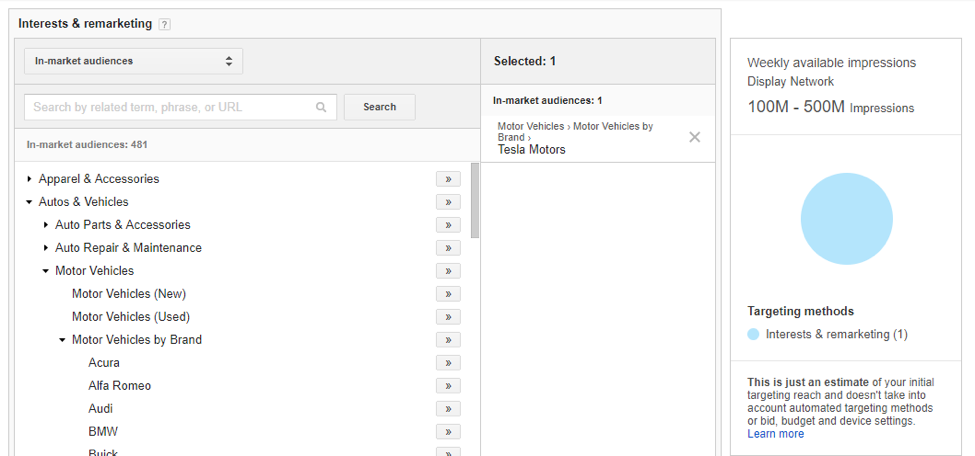
Make sure you layer this on top of other targeting options (geographics, or even other in-market segments). Empowered by this data, you can serve highly specific messaging to hyper-targeted audiences.
Conclusion
As you can see, AI can be a tool to yield and mold several different data points to generate new insights. When it comes to competitive analysis, this kind of insight is invaluable.
If you’re worried about a robot uprising, there’s nothing to worry about just yet. While AI may take away certain repetitive tasks, it actually empowers our creativity and innovation. Earlier, I mentioned there’s only so much machines can take care of. In Marcela’s words, robots can’t have empathy. Your biggest competitive advantage? Putting yourself in your customer’s shoes.
Image Credits
Feature Image: Unsplash /Stephen Dawson
All screenshots taken by author, October 2018
Image 1-11, 13-14: via SEMrush
Image 12: via Offspring
Image 15-16: via Gmail
Image 17: via Geotek IP Checker
Image 18-22: via Google Ads



